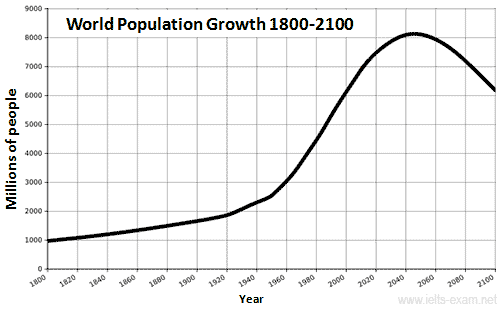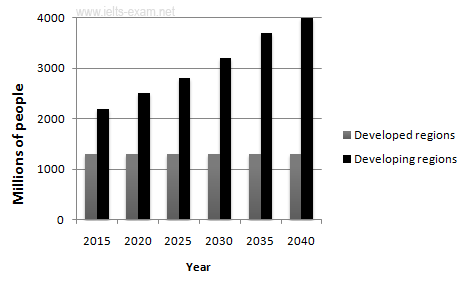Summarise the information by selecting and reporting the main features, and make comparisons where relevant.


-----------------------
There are two graphs. The first one is a line graph, which shows world's population increase from the year 1800 to a predicted increase in the year 2000. The second one is a bar graph, which foresees urbanization levels in developed and developing regions from year 2015 to 2040.
As an overall trend it is clear that the number of predicted world's population correlates with urbanization levels in developing countries. Meaning that with a higher number of people on this planet, more people from developing regions will decide to live in cities.
In 1800 world's population was around 1 billion people. This number has risen steadily till 1920's, when the population reached 2 billion, and began to increase more sharply. In 1960's population number began to increase dramatically and is predicted to reach a peak of around 8 billion people in 2040's. Afterwards a significant decrease is predicted.
As for world's urbanization levels it is predicted that throughout the 25 year period the number of people living in the cities will remain constant for people from developed regions at around 1.2 billion. However, this number should steadily increase for people from developing regions from around 2.2 billion in 2015 to 4 billion in 2040's.
In conclusion it is clear that with the rise of population more people from developing regions will migrate to cities. It is important for cities to be prepared for such occasion.
------------------------------------------
Is information well summarized ? Is the text not too long? Need comments please
